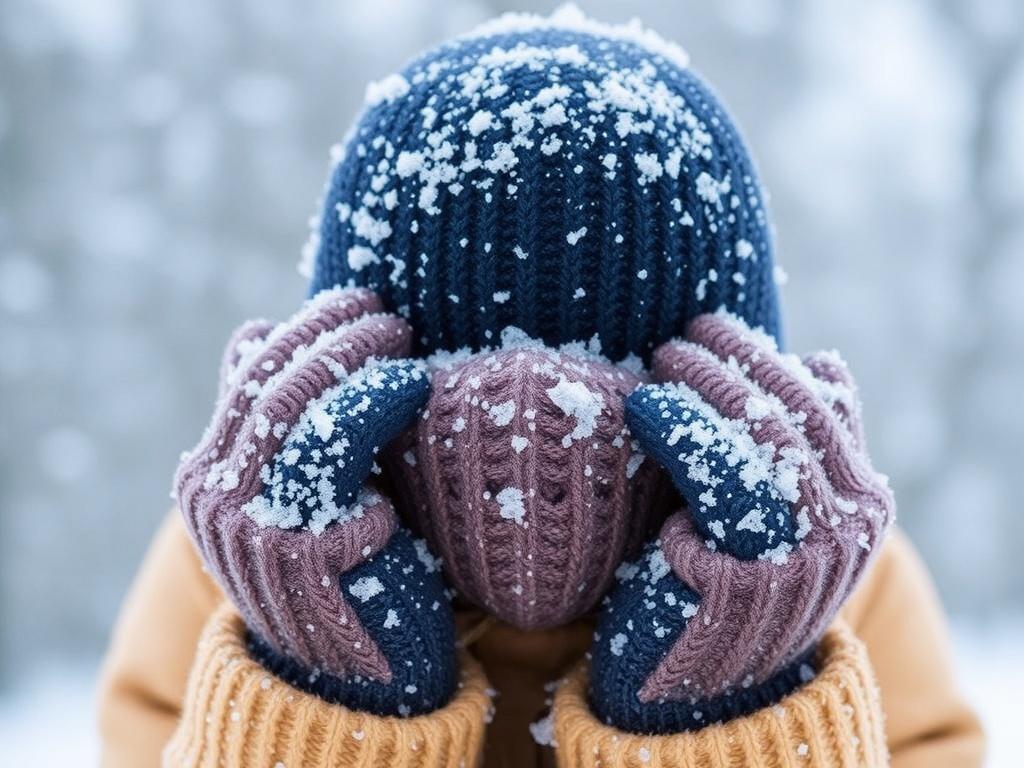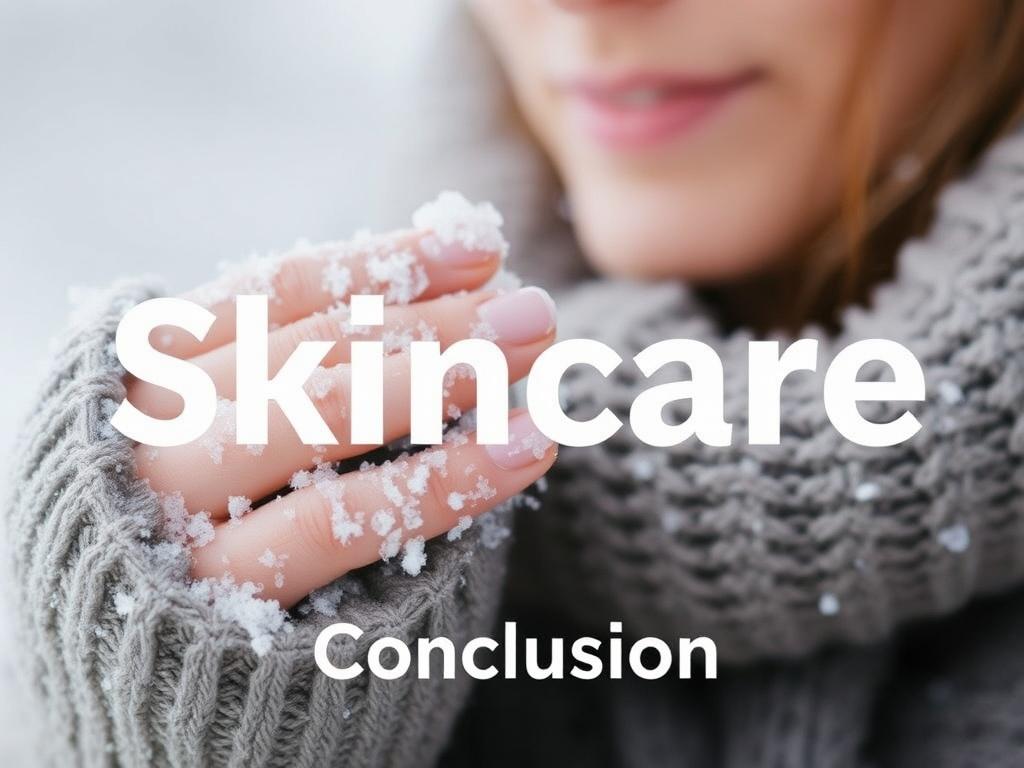Содержание статьи
- 1 Why Does Cold Weather Cause Skin Dryness and Flaking?
- 2 Understanding Your Skin Type in Winter
- 3 The Role of Moisturizers in Cold Weather Skincare
- 4 Building an Effective Cold Weather Skincare Routine
- 5 Additional Strategies for Cold Weather Skincare
- 6 Common Ingredients to Look for in Cold Weather Skincare
- 7 Common Cold Weather Skincare Mistakes to Avoid
- 8 DIY Cold Weather Skincare Remedies
- 9 When to See a Dermatologist
- 10 Summary Table: Your Cold Weather Skincare Checklist
- 11 Conclusion
When the temperature drops and the chilly winds start to blow, our skin often feels the brunt of it. Cold weather skincare becomes crucial to maintain a healthy, glowing complexion as the cold air can strip the skin of its natural moisture. Dryness and flaking become common problems during winter months, leading many to wonder how to protect their skin effectively. Fortunately, with a bit of knowledge and the right skincare routine, you can prevent dryness and flaking, even in the coldest conditions. This comprehensive guide will walk you through cold weather skincare methods, helping you keep your skin hydrated, soft, and radiant all season long.
Why Does Cold Weather Cause Skin Dryness and Flaking?
Cold weather skincare is necessary because low temperatures, coupled with low humidity levels, deprive your skin of moisture. When the air lacks humidity, the skin loses more water, leading to dryness. Additionally, indoor heating systems, which are often used during cold months, can further sap moisture from the skin. This dryness results in the skin’s protective barrier weakening, creating an environment where flaking and irritation occur easily.
The skin’s outermost layer, the stratum corneum, acts as a barrier against environmental damage. When this barrier is damaged, either by cold air or harsh weather conditions, moisture escapes, leaving the skin parched and prone to cracking. As a result, cold weather skincare emphasizes protecting and reinforcing this barrier.
Understanding Your Skin Type in Winter
Not all skin types react the same way to cold weather, which is why personalized cold weather skincare strategies are important. Whether you have oily, dry, combination, or sensitive skin, winter can affect your skin differently. Recognizing your skin type allows for better product choices and treatment plans.
- Dry Skin: More vulnerable to dryness and flaking during winter; it needs richer moisturizers and gentle cleansing.
- Oily Skin: May feel less oily in cold weather but can still experience dryness in some areas; balancing hydration without clogging pores is key.
- Combination Skin: Faces dryness in some areas and oiliness in others; patchy skincare helps address these issues.
- Sensitive Skin: Prone to redness and irritation during colder months; soothing and fragrance-free products work best.
How to Identify Your Skin Type in Cold Weather
A simple way to check your skin type is to observe how your skin feels a few hours after washing it. If it feels tight and rough, you likely have dry skin. If it appears shiny and oily, you may have oily skin. Combination skin will have oily areas (usually the T-zone) and dry patches, while sensitive skin reacts with redness or discomfort even to mild products. This assessment can help you fine-tune your cold weather skincare routine.
The Role of Moisturizers in Cold Weather Skincare
Moisturizers are the cornerstone of any cold weather skincare routine. Their primary function is to lock in moisture and reinforce the skin barrier, preventing water loss. Choosing the right moisturizer can make a significant difference in preventing dryness and flaking.
Types of Moisturizers to Consider
| Type | Description | Best For |
|---|---|---|
| Occlusives | Form thick barriers on the skin to seal in moisture (e.g., petrolatum, beeswax). | Very dry or cracked skin |
| Emollients | Softens and smoothens skin by filling spaces between skin cells (e.g., shea butter, lanolin). | Dry and flaky skin |
| Humectants | Draw moisture from the environment or deeper skin layers (e.g., glycerin, hyaluronic acid). | All skin types needing hydration |
Using moisturizers with these ingredients is especially vital in cold weather skincare because they work together to keep skin hydrated and resilient. For example, a moisturizer containing humectants will attract moisture, while occlusives will lock it in.
Building an Effective Cold Weather Skincare Routine
Creating a skincare routine geared toward cold weather is more than just slapping on a heavier moisturizer. It involves thoughtful steps that cleanse, protect, and nourish the skin.
- Gentle Cleansing: Use mild, hydrating cleansers that don’t strip away natural oils.
- Exfoliation: Exfoliate sparingly to remove dead skin cells but avoid over-exfoliating, which can worsen dryness and flaking.
- Hydrating Serums: Incorporate serums with ingredients like hyaluronic acid to boost moisture retention.
- Rich Moisturizing: Apply a rich, emollient moisturizer morning and evening.
- Sun Protection: Don’t skip sunscreen; cold weather doesn’t protect you from UV rays.
- Lip and Eye Care: Use specific balms or creams to protect delicate areas prone to dryness.
Tips for Each Step
- Cleanser: Avoid foaming or harsh detergents during winter; look for cream-based or oil-based cleansers.
- Exfoliation: Use gentle chemical exfoliants like lactic acid or mild physical exfoliants no more than once a week.
- Serums: Layer serums under moisturizer to enhance hydration and barrier repair.
- Moisturizer: Apply to damp skin to trap more moisture.
- Sunscreen: Opt for broad-spectrum SPF 30 or higher, even on cloudy winter days.
Additional Strategies for Cold Weather Skincare
Aside from the traditional skincare steps, there are other helpful tactics to maintain healthy skin during winter.
Humidifiers and Hydration
Indoor heating dries out the air considerably, which exacerbates skin dryness. Using a humidifier in your home or office can add moisture back to the air, helping your skin stay hydrated naturally. Alongside this, drinking plenty of water throughout the day supports skin hydration from within.
Protective Clothing
Sometimes, the best cold weather skincare is physical protection. Wearing scarves, gloves, and hats helps shield skin from biting winds and extreme cold. Avoid rough fabrics like wool directly on your face as they may cause irritation; opt for soft, natural materials instead.
Nighttime Care
At night, your skin works to repair itself. Cold weather skincare should take advantage of this by using richer creams or ointments before bed. Overnight masks or sleeping packs that seal in moisture can be particularly effective.
Common Ingredients to Look for in Cold Weather Skincare

When selecting products for cold weather skincare, knowing which ingredients provide lasting hydration and barrier support helps.
Key Hydrating Ingredients
| Ingredient | Function | Why It Helps in Cold Weather |
|---|---|---|
| Hyaluronic Acid | Humectant that attracts and holds water in the skin | Boosts hydration and plumps skin |
| Glycerin | Hydrates by drawing water from the environment | Keeps skin moist and soft |
| Shea Butter | Emollient that softens and smooths skin | Restores softness and helps repair the skin barrier |
| Petrolatum | Occlusive that seals moisture in | Prevents water loss even in harsh conditions |
| Ceramides | Lipid molecules that build the skin’s barrier | Strengthen the protective layer preventing dryness |
Ingredients to Avoid in Cold Weather Skincare
It’s also important to avoid ingredients that may aggravate dry or sensitive skin during cold weather.
- Alcohol-based toners and astringents that dry out skin
- Fragrances and dyes that may irritate sensitive skin
- Harsh exfoliants or acids used excessively
- Sulfates found in many foaming cleansers
Common Cold Weather Skincare Mistakes to Avoid
Even with the best intentions, you might accidentally worsen dryness or flaking by making certain mistakes.
Over-cleansing or Using Hot Water
While it might be tempting to take hot showers or wash your face with hot water in cold weather, this actually strips natural oils quicker. Use lukewarm water, and avoid washing the face more than twice a day.
Skipping Sunscreen
Cold weather doesn’t mean no sun. Snow reflects UV rays, increasing exposure. Skipping sunscreen can lead to sun damage and worsen skin dryness.
Neglecting Lips and Hands
These areas are more exposed and prone to dryness. Neglecting them can cause painful cracks and flaking.
Using the Same Products Year-Round
Switching to more hydrating, nourishing products tailored for winter protects your skin properly instead of sticking to lightweight summer formulas.
DIY Cold Weather Skincare Remedies
If you enjoy natural solutions, some homemade remedies can complement your cold weather skincare routine.
- Oatmeal Baths: Soothes itchy, flaky skin and adds moisture.
- Honey Face Masks: Natural humectant and antibacterial agent.
- Aloe Vera Gel: Calms irritation and provides hydration.
- Coconut Oil: Acts as an emollient that locks in moisture.
Remember, patch test any DIY remedy before applying it broadly to avoid allergic reactions.
When to See a Dermatologist
Sometimes, despite your best cold weather skincare efforts, dryness and flaking persist or worsen. If you experience severe redness, cracking, bleeding, or pain, it might be a sign of skin conditions like eczema or psoriasis requiring professional care. Don’t hesitate to schedule a visit with a dermatologist to get personalized treatment recommendations.
Summary Table: Your Cold Weather Skincare Checklist

| Step | Action | Recommended Products/Ingredients |
|---|---|---|
| Cleanse | Use gentle, hydrating cleanser with lukewarm water | Cream cleanser, non-foaming formulas |
| Exfoliate | Gently exfoliate 1-2 times per week | Lactic acid, mild physical exfoliants |
| Hydrate | Apply hydrating serum | Hyaluronic acid, glycerin |
| Moisturize | Use rich moisturizer twice daily | Shea butter, ceramides, petrolatum |
| Protect | Apply sunscreen daily, protect lips and hands | Broad-spectrum SPF 30+, lip balm, hand cream |
| Environmental | Use humidifier, wear protective clothing | Humidifier, scarves, gloves |
Conclusion

Cold weather skincare is all about adapting your routine to protect your skin from the harsh effects of winter. By understanding how cold air and indoor heating strip moisture away, you can take proactive steps to prevent dryness and flaking. Choosing the right cleansers, moisturizers, and protective products tailored to your skin type is essential, alongside lifestyle adjustments such as using humidifiers and wearing protective clothing. Avoiding common mistakes like over-cleansing or skipping sunscreen ensures your skin remains healthy and vibrant, even when the temperature drops. Whether you stick to tried-and-true products or incorporate natural remedies, a consistent, mindful approach to cold weather skincare will leave your skin feeling nourished, comfortable, and glowing throughout the season.

